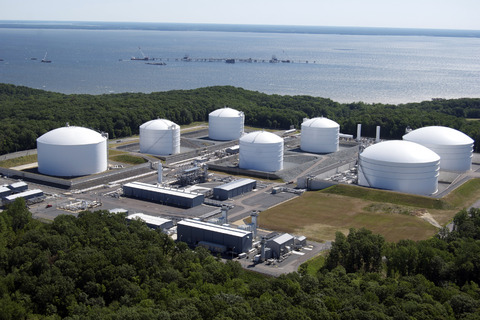LNG & a new cold war?
25 Mar 2014

It looks increasingly likely that gas will not only replace nuclear as the topic of choice in the Netherlands this week, but also as the sabre that will be rattled by both the US and Russia as they revert to some of the hostilities of the Cold War.
The leaders of the G7 group of nations are in Netherlands this week at a meeting scheduled to be all about nuclear security.
However, the Nuclear Security Summit has instead been dominated by discussions of what action can be taken against Russia over its invasion of the Crimea region of Ukraine.
Although the G7 nations are considering economic sanctions, much of what has been said so far by leaders such as prime minister David Cameron and German chancellor Angela Merkel sounds like little more than finger-wagging and a weak telling off for Russian president Vladimir Putin.
A week is a long time in politics, and by the time all of these export facilities are up and running the trouble in Crimea may well seem like ancient history
Part of the reason Europe seems powerless to stop Putin is that it relies on Russia to supply 25% of its gas.
One of the key issues being discussed at the summit now is how Europe can wean itself off its dependency on Russian gas. Lawmakers in the US seem to think that its shale gas revolution could provide the answer.
On Monday the Jordan Cove Liquefied Natural Gas (LNG) terminal in Oregon became the latest export facility to receive backing from the US Department of Energy (DOE), and according to Time magazine, members of both parties in the US Senate are seeking ways to speed up the approval process for multiple LNG facilities to be built.
So far six projects including Jordan Cove have received DOE approval to export to countries without a free-trade agreement with the US, but only one, Sabine Pass [a project to convert an existing import gasification terminal to an export liquefaction facility], has received all the necessary environmental permits and regulatory approvals and has begun construction. The six projects, five of which are on the east coast and could potentially export to Europe, are as follows:
- Cheniere Energy’s Sabine Pass, Louisana Gulf Coast, 3 billion cubic feet per day (bcf/d) capacity
- Freeport LNG, Texas Gulf Coast, 1.8 bcf/d
- Lake Charles Terminal, Louisiana Gulf Coast, 2 bcf/d
- Dominion Cove Point LNG, Maryland 0.77 bcf/d
- Cameron LNG, Louisiana Gulf Coast, 1.7 bcf/d
- Jordan Cove, Oregon, 0.8 bcf/d
In addition to these, Cheniere Energy also has a project on the Texas Gulf Coast, Corpus Christi LNG, which has yet to receive DOE approval but has already signed EPC contracts with Bechtel and a sale and purchase agreement with Indonesia’s Pertamina.
Given that the firms behind these projects will have their eyes on exports to Asia and Latin America as well as Europe, it is perhaps a tad unlikely to suppose the Russian gas taps could be turned off and US LNG brought in to replace it.
These projects are also all long term, with Sabine Pass the first to come online no sooner than next year. A week is a long time in politics, and by the time all of these export facilities are up and running the trouble in Crimea may well seem like ancient history.
However, whatever the reality of the situation, it looks increasingly likely that gas will not only replace nuclear as the topic of choice in the Netherlands this week, but also as the sabre that will be rattled by both the US and Russia as they revert to some of the hostilities of the Cold War.

